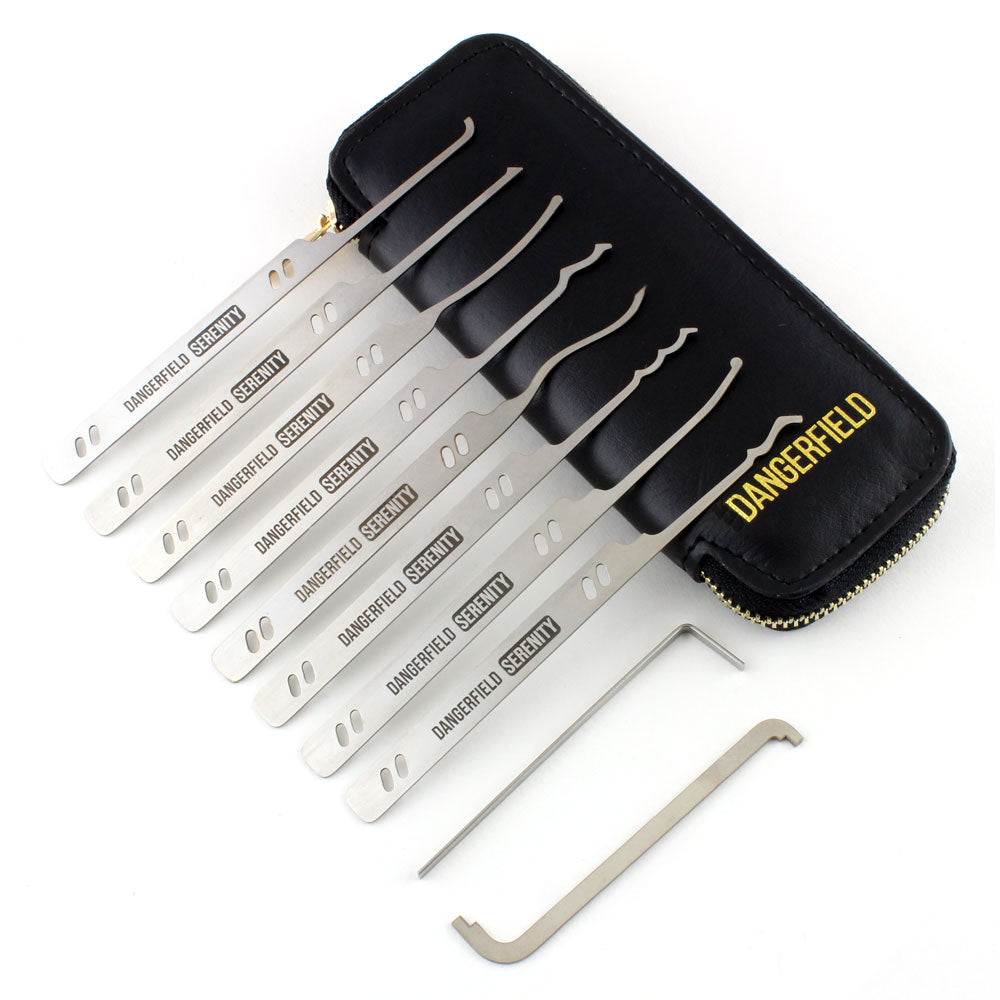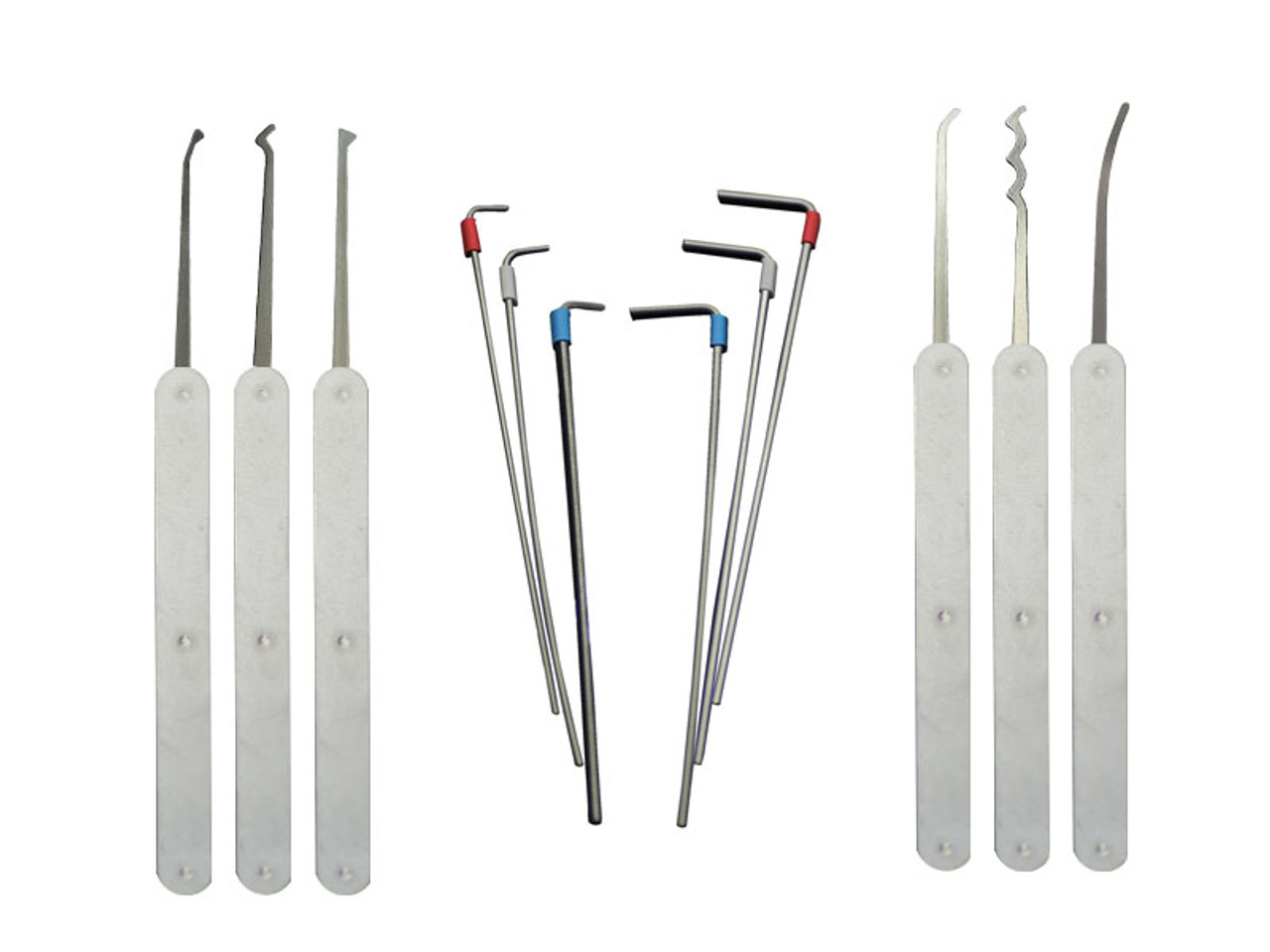


This pick is commonly used to open wafer locks.
Lock pick set full#
The ball pick is similar to the half-diamond pick, except the end of the pick has a half or full circle shape. A variety of differently sized and shaped hooks are available in a normal set.
Lock pick set professional#
This is the most basic lockpicking tool and is all that a professional will usually need if the lock is to be picked in the traditional sense rather than opened by raking or using a pick gun. The hook pick is sometimes referred to as a "feeler" or "finger" and is not used for raking. The hook pick is similar to the half-diamond pick but has a hook-shaped tip rather than a half-diamond shape. A normal set comprises around three half-diamond picks and a full-diamond pick.

The angles that form the base of the half-diamond can be either steep or shallow, depending on the need for picking without affecting neighboring pins, or raking as appropriate. The triangular-shaped half-diamond is usually 2.5 to 12.2 millimeters (0.098 to 0.480 inches) long. This versatile pick is included in nearly all kits and is mainly used for picking individual pins, but can also be used for raking and wafer and disk locks. These are commonly used with double-sided wafer locks. Other tension tools, especially those for use with cars, resemble a pair of tweezers and allow the user to apply torque to both the top and the bottom of the lock. The bottom of the keyway wrenches is typically shaped like a letter "L", although the vertical part of the letter is elongated in comparison to the horizontal part. There are two basic types of tension: "bottom of the keyway" and "top of the keyway". Once all pins are picked, the tension wrench is then used to turn the plug and open the lock. It is used to apply torque to the plug of a lock to hold any picked pins in place. The tension wrench, or torsion wrench, is generally used when picking a pin tumbler or wafer lock. From left to right: torsion wrench, "twist-flex" torsion wrench, offset diamond pick, ball pick, half-diamond pick, short hook, medium hook, saw (or "L") rake, snake (or "C") rake. As the key slides into the lock through the keyway, the wards align with the grooves in the key's profile to allow or deny entry into the lock cylinder.Ī traditional pick set.
Lock pick set series#
Additionally, a series of grooves on either side of the key's blade limit the type of lock the key can slide into. For example, if you have a chest of drawers with a warded lock you can make a skeleton key for that type of warded lock by filing away all but the last one or two teeth or bittings on both sides of the blade. The other parts are there to distinguish between different varieties of their locks. The keys for warded locks only require the back end manipulating which is the end which opens the lock. It is generally made to conform to a generalized key shape relatively simpler than the actual key used to open the lock this simpler shape allows for internal manipulations. The warded pick, also known as a skeleton key, is used for opening warded locks. Tools Ī common set of skeleton keys used to open most types of warded padlocks. īeginning in 1997 more organized recreational lockpicking has now grown and developed a competitive aspect in " locksport", along with its own governing body, Locksport International. The tradition of student roof and tunnel hacking at MIT included lockpicking, and their guide to this was made widely available in 1991. King Louis XVI of France (1754–1793) was a keen designer, picker, and manipulator of locks, and physicist Richard Feynman picked locks for fun in the 1940s while employed on the Manhattan Project. Professional and recreational lock picking also has a long history. Rogues knew a good deal about lock-picking long before locksmiths discussed it among themselves. Rogues are very keen on their profession and know already much more than we can teach them respecting their several kinds of roguery. Famed locksmith Alfred Charles Hobbs said in the mid-1800s: Despite this, criminal lock picking likely started with the first locks. Locks by definition secure or fasten something with the intention that access is possible only with the matching key.


 0 kommentar(er)
0 kommentar(er)
